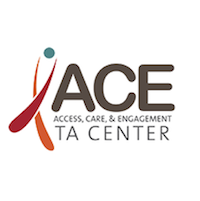
Aug. 10, 2021 Update: Beginning September 1, some Healthcare.gov enrollees will have enhanced premium tax credits automatically applied to their account. Read the section below titled ‘How do people apply for the tax credits?’ for more information.
The American Rescue Plan includes new premium subsidies to help people afford their Marketplace and COBRA health insurance plans. Make sure your Ryan White HIV/AIDS Program (RWHAP) clients are aware of these opportunities and their deadlines.
Encourage clients to sign up or update their applications soon! This ACE TA Center blog explains the basics and how to learn more about:
- Increased tax credits to reduce Marketplace premium costs for 2021 and 2022
- Fully subsidized COBRA premiums for eligible individuals through September 30, 2021
- The basics of premium tax credits (see sidebar)
Increased tax credits to reduce Marketplace premium costs for 2021 and 2022
Many people who earn between 100% and 400% of the federal poverty level (FPL) can now qualify for increased financial help through premium tax credits (PTCs). This means that over half of all enrollees should be able to find a silver plan for less than $10/month.
Who qualifies for these increased tax credits?
- Many people who earn between 100% and 400% of the federal poverty level (FPL) can now qualify for increased financial help through premium tax credits (PTCs). This means that over half of all enrollees should be able to find a silver plan for less than $10/month.
- People who earn below 150% FPL are now eligible for a $0 premium plan.
- Premium tax credits are now available to many people who make over 400% FPL, too! The Marketplace now uses a sliding scale (based on income), to calculate the amount of PTCs for that person. If a person’s premium is higher than 8.5 percent of their overall household income, they are now eligible for PTCs.
- Starting in early July on HealthCare.gov, people who receive unemployment compensation for any week in 2021 will be eligible for no-cost Marketplace insurance. Specifically, these individuals will become eligible for the maximum amount of PTCs and cost-sharing reductions (CSRs) for the rest of 2021.
- This benefit is available regardless of what the consumer’s income actually was. For example, people in states that have not expanded Medicaid (who were previously ineligible) will now be automatically eligible for maximum PTCs and CSRs if they received unemployment compensation at any time in 2021.
- This opportunity applies to anyone who has received unemployment compensation in 2021, or who has been determined eligible for compensation. However, in order to still be eligible for PTCs and CSRs, individuals cannot have an offer of affordable employer coverage.
How do people apply for the enhanced tax credits?
- Clients with health insurance through HealthCare.gov should update their application as soon as possible to begin receiving the enhanced tax credits. They can do this by logging into HealthCare.gov, selecting ‘report a life change,’ and reporting a change in income. This will ensure that new APTC amounts are applied directly to the individual’s premium costs. Beginning September 1, some clients may have the tax credits automatically applied to their account, and they will see the reduced premium amount reflected in their monthly premium. To ensure clients are receiving the correct amount of APTC, however, RWHAP program staff should strongly encourage clients to update their Marketplace applications as soon as possible.
- The process for clients who enrolled through a state-based Marketplace may be different from Healthcare.gov. Clients enrolled in health insurance through a state-based Marketplace should log into that website to see what - if any - action may be required.
- For more information, visit the FAQ: Automatic APTC Increases from the Center on Budget and Policy Priorities.
Fully subsidized COBRA premiums for eligible individuals through September 30, 2021
COBRA plans are usually very expensive and sometimes have coverage limitations, so it has often made more sense for people with HIV to consider subsidized Marketplace plans instead. However, some people may want to enroll in COBRA plans between now and September 30, 2021 and RWHAP ADAP insurance assistance programs may consider COBRA as an option for clients with anticipated short-term gaps in coverage.
From April 1 to September 30, the federal government will fully subsidize COBRA premiums for workers who have been involuntarily let go or whose hours were reduced. This means that qualified individuals will not have to pay any COBRA premiums during this time period.
What is COBRA, again?
COBRA (the Consolidated Omnibus Budget Reconciliation Act) allows people who lose their jobs to continue their employer-sponsored insurance coverage for up to 18 months.
Who is eligible for COBRA premium assistance?
- People on COBRA as of April 1.
- People who lose their jobs or experience reduced hours at any point between April 1 and September 30, 2021.
- People who lost their jobs or experienced reduced hours before April 1, 2021 who were eligible for COBRA but did not sign up or dropped that coverage.
How should people apply for COBRA premium assistance?
- Clients who qualify for assistance should get a notice from their employer or plan administrator by May 31 with information about how they can elect COBRA premium assistance.
- A client who thinks they are eligible for COBRA premium assistance can also notify the employer and request the premium assistance. See more information about how to elect COBRA premium assistance from the Department of Labor COBRA FAQ.
- The COBRA premium subsidies go directly to employers, not to clients.
What happens when these COBRA subsidies run out on September 30?
When COBRA premium assistance runs out on September 30, 2021, people will be eligible for a Special Enrollment Period (SEP) to enroll in Marketplace coverage (if they are not returning to an employer plan). COBRA continuation still lasts for up to 18 months, but starting October 1, 2021, clients enrolled in COBRA will be responsible for the premiums.